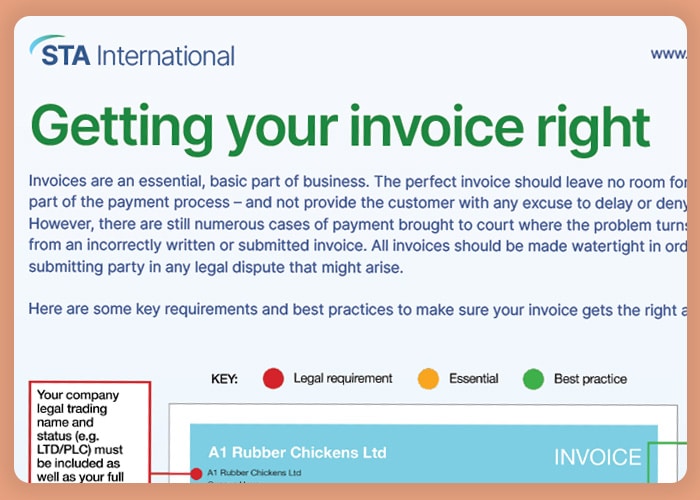Learn how to write an invoice – and get it right. Invoices are an essential, basic part of business. The person or company who provides the product or service has to send an invoice to the person or company who has bought it so that payment can be processed. However, there are still numerous cases of payment brought to court where the problem turns out to stem from an incorrectly written or submitted invoice. All invoices should be made watertight in order to protect the submitting party in any legal dispute that might arise.
With this in mind, our guide to getting your invoice right includes just some of the details and items that should be included on every invoice. Some are legal requirements, some are important to note for clarity, and some are just good practice. When considering how to write your own invoices, note that some companies may also require extra details beyond the ones mentioned. Ultimately, consider your needs and those of the company you are invoicing. Our sample invoice gives a guide to how your invoice should look, which you can build upon and personalise.
The perfect invoice should leave no room for doubt about any part of the payment process – and not provide the customer with any excuse to delay or deny payment.
Our example invoice includes:
- Legal requirements including business status, essential dates and VAT information.
- Essential customer information you must include to pursue late payments.
- Best practice details to help customers pay you on time via your preferred method(s).

